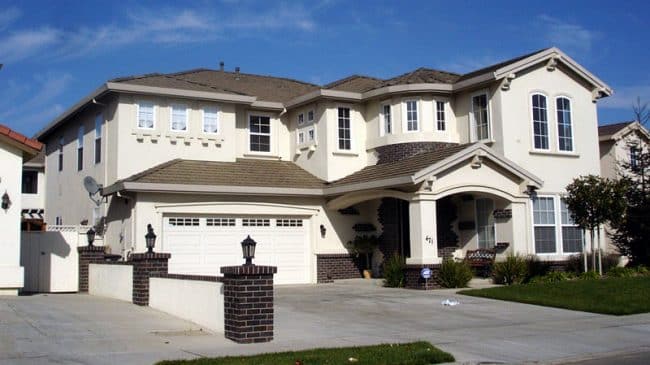Across the United States, major cities are experiencing the gentrification of their neighborhoods and city officials are constantly calling for more affordable housing to halt this process. Unfortunately many of these officials do not know — or refuse to acknowledge — that their housing regulations are a contributing cause of gentrification.
Using government regulation to create lower cost housing instead of letting market forces push down housing prices as technology improves and production costs fall has done little to reduce gentrification over the past five decades since the creation of the Department of Housing and Urban Development (HUD). If city officials truly care about providing more affordable housing in order to reduce gentrification (presuming this policy goal is a good idea) they should liberalize the lower end of the housing market. This can be accomplished by eliminating restrictions on minimum lot sizes, occupant density, and minimum unit sizes, along with removing laws prohibiting housing options like accessory dwelling units.
Alan Durning, founder of the Sightline Institute, argues that by outlawing the bottom end of the market cities have driven up rents on all housing. Politicians and upper middle class residents who were appalled at the living conditions of the boarding houses of yore thought that by regulating those options out of existence they were doing the relatively poor a favor. But all they were really doing was forcing them to move or live a life of homelessness.
Mr. Durning writes, “It’s not that I don’t want people to have nice housing. It’s that the consequences of imposing middle-class norms of decency are to increase homelessness, to raise the cost of housing, especially at the bottom end of the market, but more generally for everybody, to make housing less abundant, and to accelerate sprawl.”
Though Mr. During is no supporter of unfettered free markets he does understand that interfering with the housing market by removing choices has unintended negative consequences. Too often politicians and well-to-do voters impose their preferences on society as a whole without acknowledging that some people do not value the same things. Value is subjective. Not everyone is willing to pay the price for their own kitchen or even their own bathroom, and would rather spend the money saved on other things.
These are acceptable preferences that should not be restricted by politicians and voters who think they know best.
Opening up the bottom end of the housing market also reduces the need for subsidized public housing. Many cities use subsidized public housing as a way of providing the relatively poor with a roof over their heads. These subsidies can be in the form of tax breaks, tax credits, or low interest municipality funding. Allowing a low cost, private option into the housing market that isn’t forced to adhere to costly regulations would alleviate the need for some of these subsidies while also fostering an intermingling of social classes rather than the isolation of the poor — a characteristic of many public housing projects. Governments could use the help too, since many of their attempts to correct for the poor planning of past public housing projects have been unsuccessful.
Unfortunately, the Obama administration appears to be doubling down on the failed government intervention approach. In a recent speech to the NAACP, HUD secretary Shaun Donovan announced a new fair housing regulation and database within an effort to expand “…access to high opportunity neighborhoods and draw attention to investment possibilities in underserved communities.” The language makes it seem as if Mr. Donovan wants to encourage communities to work with the private sector to identify investment opportunities in both housing and retail in underserved communities.
According to Mr. Donovan, HUD believes that “…people are being denied their freedom of choice and the benefits of full citizenship” — but ironically they are using the coercive power of the government to do things such as force communities to include minorities, whether minorities want to live there or not.
The real problem starts with the bad government policies that restrict housing. A government mandate that specifies an arbitrary amount of minorities be present in neighborhoods does not solve this and won’t create real diversity. Diversity is more than just skin color. It means having people of different cultures, educational backgrounds, ages, and life experiences interacting with one another. A neighborhood full of Black, White, Asian, and Hispanic Ivy League educated doctors and lawyers is far less diverse than a neighborhood where doctors and lawyers live side by side with shop owners, restaurant owners, teachers, college students, and policemen.
When government agencies like HUD use race as the sole measure of diversity they trivialize true diversity. Their pandering to organizations like the NAACP is really just a front for increasing the scope of government in the housing market, a strategy that for the last 48 years has yielded few positive results on both the gentrification and diversity fronts.
Government policies that place restrictions on unit size, occupant density, lot size, and accessory dwelling units are impediments to low cost housing; and the lack of low cost housing is the real threat to diversity. If city officials want people of different ages, incomes, and tastes to live in their city they need to allow for a variety of housing options. Public housing assistance programs that impose some bureaucrat’s vision of what appropriate housing is have proven to be incapable of reducing the gentrification of neighborhoods while oftentimes doing more harm than good. In order to make cities truly affordable, and in the process more diverse, restrictions limiting the housing supply need to be removed so that consumers are free to decide what type of housing they are willing to live in. Opening up the bottom end of the housing market will not only allow more relatively low-income earners to experience all of the amenities of city living, but it will also reduce the need for the utter failure that is government subsidized housing-something that can’t happen soon enough.
